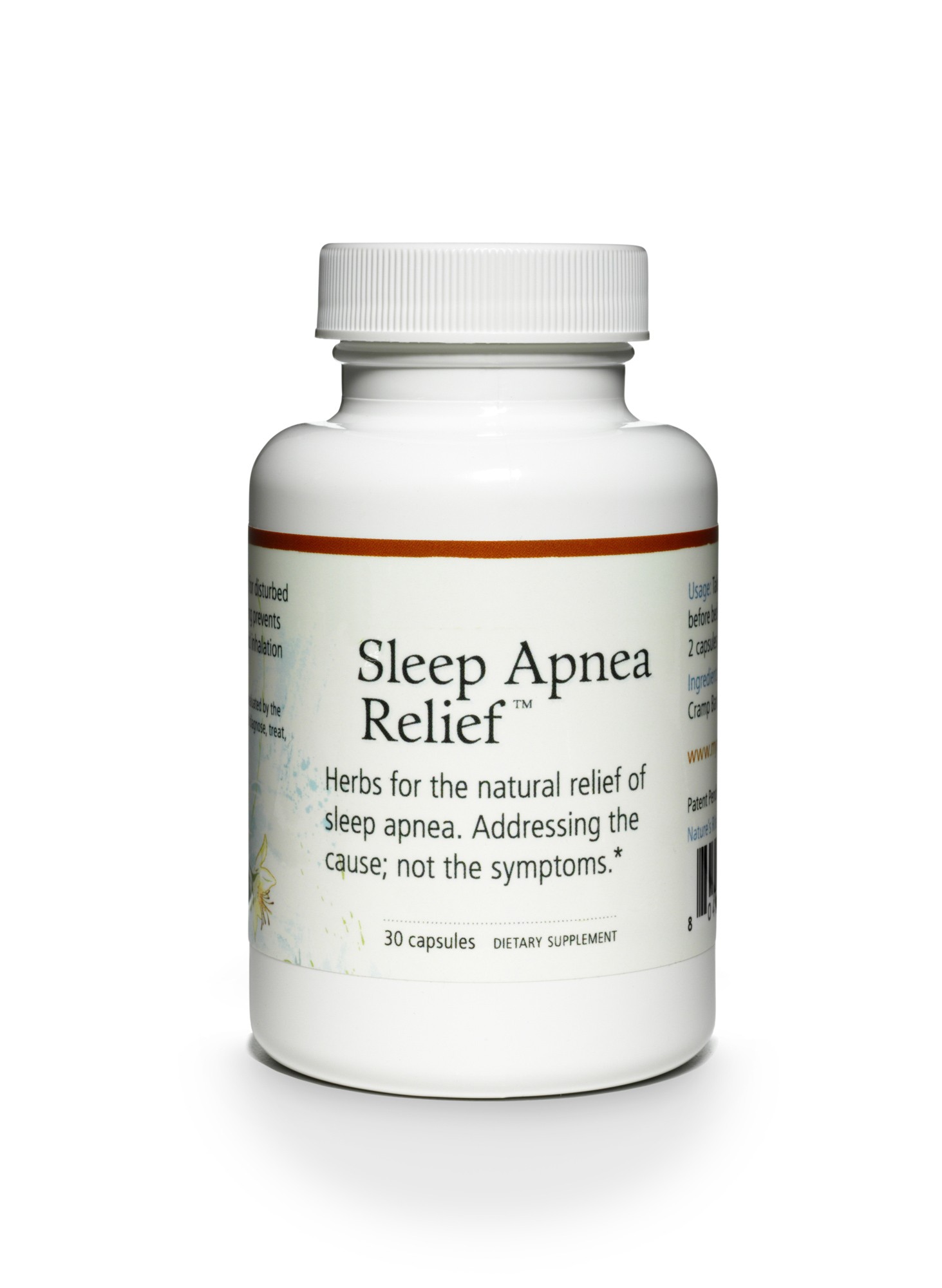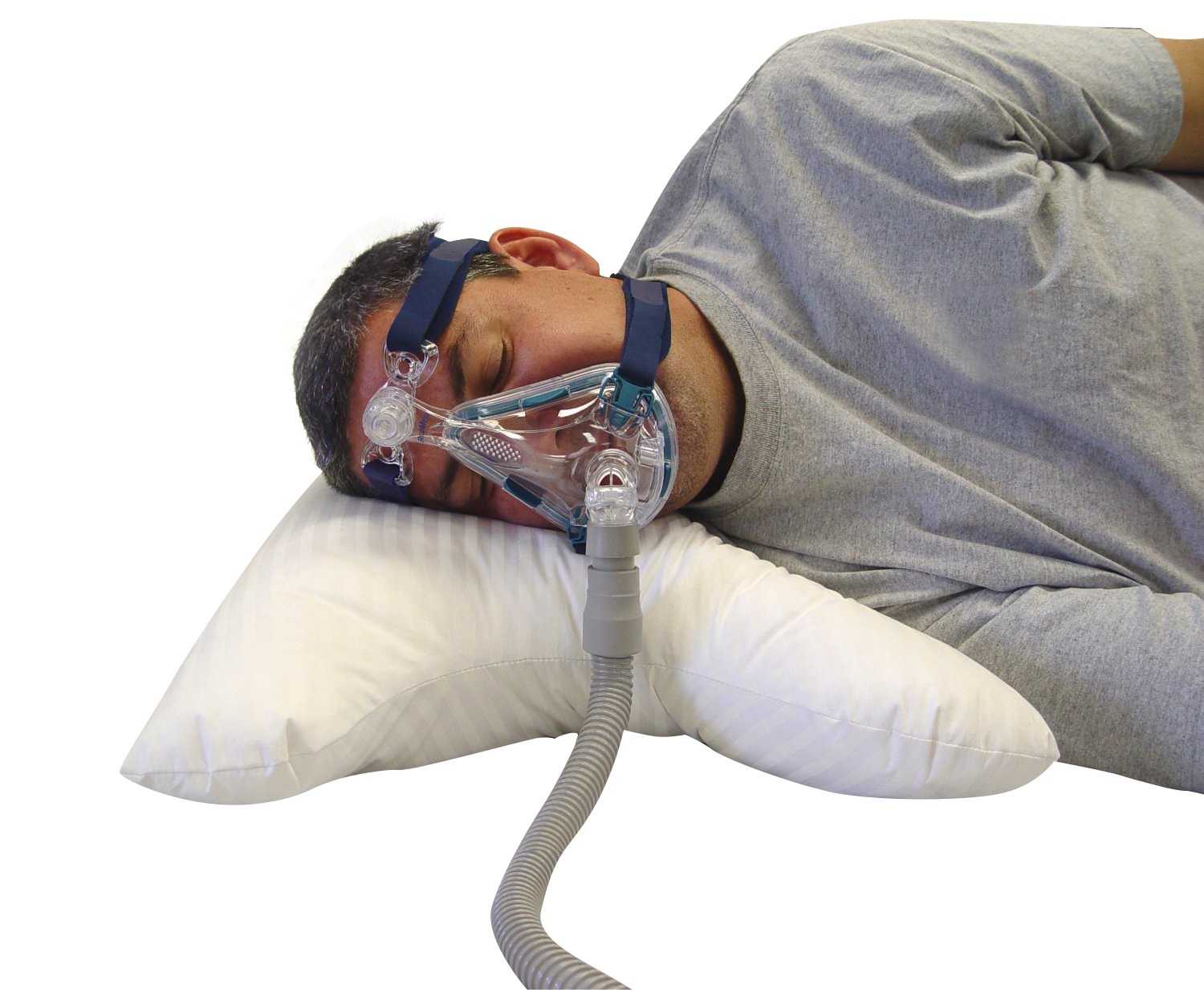Sleep Apnea is a common sleep disorder affecting approximately four percent of Americans in which a person regularly stops breathing during sleep for 10 seconds or longer. Untreated sleep apnea sufferers stop breathing repeatedly during their sleep, sometimes hundreds of times during the night and often for a minute or longer. Without treatment, sleep apnea can cause high blood pressure, cardiovascular disease, memory problems, weight gain, impotency, headaches and can often be responsible for job impairment and motor vehicle crashes. Fortunately, sleep apnea can be diagnosed (either at home or in a sleep clinic) and treated. Several treatment options exist, and research into additional options continues. Although these treatments can be very effective when properly applied, they often involve cumbersome devices that can be uncomfortable, causing sleeping problems themselves. Because of this, sleep Apnea sufferers must be diligent in selecting treatment options that are not only effective, but which also can be reasonably incorporated into their personal lifestyles, habits and daily routines.
There are three types of apnea: obstructive which is caused by a blockage of the airway (usually when the soft tissue in the rear of the throat collapses and closes during sleep), central caused by the brain failing to signal the muscles to breathe, and mixed, a combination of the first two. Obstructive Sleep Apnea (OSA) is the most common. The risk of OSA rises with increasing body weight, smoking and age. Those with diabetes or "fringe" diabetes have up to three times the danger of having OSA. Manifestations incorporate noisy wheezing, eager rest, and tiredness throughout the daytime.
Treating Sleep Apnea with a Continuous Positive Airway (CPAP) Device
A common treatment for sleep apnea is a continuous positive airway pressure (CPAP) device. A CPAP device includes a mask, tubes and a fan.It utilizes pneumatic force to push your tongue advance and open your throat. This permits air to pass through your throat. A CPAP device reduces snoring and prevents apnea disturbances. It does not cure sleep apnea, but if used correctly, will significantly reduce the frequency and severity of Apnea episodes.
In most cases, a CPAP machine is covered by a patient’s medical insurance, and the patient usually has a choice from a variety of machine manufacturers. Devices can be rented or bought at a home health care company or a medical equipment company. These machines can also be purchased on the Internet, but it is strongly recommended that research be performed and product reviews be read before buying online. Patients should also consider renting for a period before buying in order to get a feel for effectiveness and usability of the equipment.
Problems with CPAP and Recommended Fixes
Improperly Fitted or Wrong Size Mask: CPAP mask fitting problems are the major causes of discomfort or ineffective treatment experienced by CPAP users. A tight mask might cause bothering to the skin, while a detached one will permit air to hole out. A spilling cover decreases the weight beneath that needed for successful medication When obtaining or leasing, the mask ought to be precisely fitted by a prepared expert. Full covers are less averse to stay set up than fractional masks, while covers with an extra button strap are especially stable.
Skin Irritation: A tight mask may cause rashes or other skin irritation. After frequent use, the parts of the mask that touch the face may become dirty and harbor micro-organism. To avoid this situation, the mask must be cleaned each day with a non-abrasive cleaner or disinfectant. The face should also be cleaned before and after using the mask, and anti-allergy ointments may also be helpful.
Nasal Congestion: Forcing air into one's air way through the nasal mask of a CPAP usually causes a dry and stuffy nose. Some users develop develop congestion or a runny nose following the start of CPAP treatment. These problems may be overcome by using a CPAP equipped with a heated humidifier. The dampness from the humidifier helps beat the dryness brought on by the consistent stream of air into the air way.
Difficulty in Tolerating Forced Air: The aim of CPAP is to maintain air pressure inside the air way, and it does so by forcing air into the user's wind pipe. Many people find it difficult to get used to this forced air and require an adjustment period to acclimate themselves to the process. This problem can be solved by using a CPAP equipped with a 'ramp' feature. This feature causes the user to initially receive low pressure air from the CPAP machine. As the user falls asleep, the pressure gradually increases to the proper level.
Displacement of Mask by Sleeping Position or Movement During Sleep: Since the mask is fitted on the face, turning throughout rest may make it get dislodged. Clients are at some point prompted mull over their backs to avert the mask from falling off their face. On the other hand, dozing throughout the night on the back is extremely uncomfortable for most individuals, and patients considering their back have reported an increment in intensity of rest apnea. Mulling over the side is a great result, the issue of the mask slipping of the face still remains.
Alternatives to CPAP
Alhough most health professionals consider CPAP to be effective in providing relief from sleep apnea, many users are unsatisfied and seek alternatives. Detail show that just 23% of people experiencing rest apnea succeed in getting used to CPAP. The mask and hose are large and cumbersome and many find it extremely uncomfortable to wear the appliance while sleeping. In addition, there are the above referenced problems. Though some adjust to the equipment in time, most discontinue its use altogether. Some adopt other treatment while others remain exposed to the health risks and potential debilitating effects of Sleep Apnea. Two of the major CPAP alternatives are:
Intraoral Dental Appliance: These machine comprises of two U-molded plates that are joined to structure a pivot. They are specially designed by a dental specialist or an orthodontist, consistent with one's dental estimations. It changes the client's more level jaw and tongue with the intention that the air section does not fall while resting. There are lingual tabs that hold the apparatus set up. As intraoral dental apparatuses are less uncomfortable and additionally less noticeable than CPAP, they are coming to be progressively prevalent with rest apnea sufferers.
Surgery: Surgery is an alternate elective to CPAP. Surgery points at extending the breathing entry. This is carried out either by hardening or contracting overabundance tissue in one's throat and mouth or by resetting the easier jaw. Stiffening or contracting the tissue may require an arrangement of medications. Hardening the tissue in the mouth and throat is refined by making a little cut in the tissue and embeddings a little bit of firm plastic. Recovery time for this procedure is usually one to two weeks. For child sufferers from sleep apnea, removing the tonsils may help. In many cases, as a child grows, the tissues blocking the airway shrink on their own. For both children and adults, a physician’s advice should be sought before considering any kind of surgery.
Sleep apnea can cause discomfort not only to an individual but also to his family members, due to the snoring the that is usually associated with this disorder. However, from oral appliances to surgery, there are an increasing number of viable options available to those seeking relief from Sleep Apnea.




